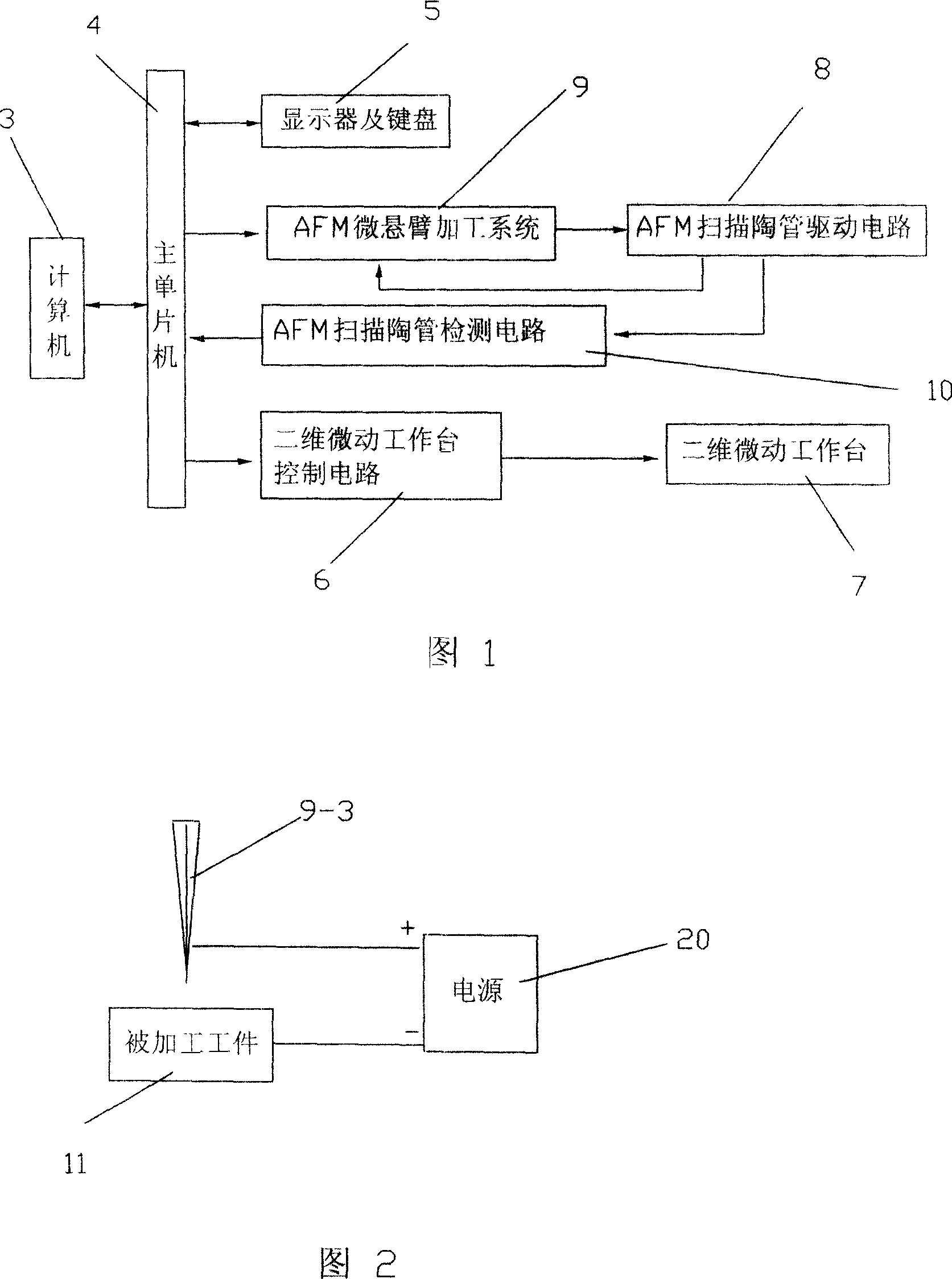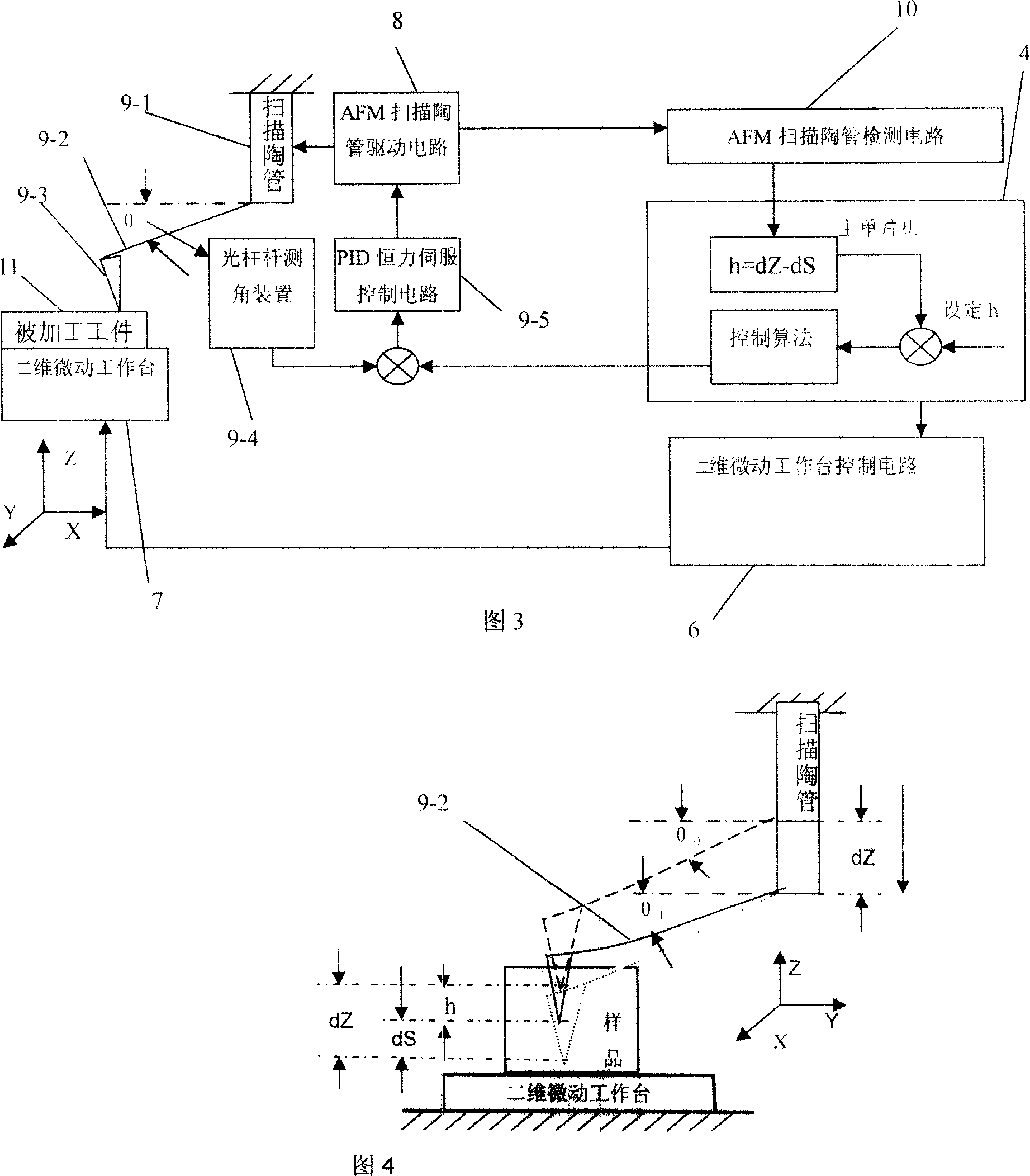Method for making Nano microstructure based on constant force mode of atomic force microscope
An atomic force microscope and microstructure technology, applied in nanostructure manufacturing, nanotechnology, nanotechnology, etc., can solve problems such as limited size range, and achieve the effects of overcoming poor repeatability positioning accuracy, suppressing system drift, and high positioning accuracy
- Summary
- Abstract
- Description
- Claims
- Application Information
AI Technical Summary
Problems solved by technology
Method used
Image
Examples
specific Embodiment approach 1
[0008] Specific Embodiment 1: The present embodiment will be specifically described below with reference to FIG. 1 , FIG. 3 and FIG. 4 . The system of the inventive method comprises computer 3, main single-chip microcomputer 4, display and keyboard 5, AFM scanning pottery tube drive circuit 8, AFM microcantilever processing system 9 and AFM scanning pottery tube detection circuit 10, AFM microcantilever processing system 9 includes scanning pottery tube Pipe 9-1, cantilever 9-2, probe 9-3, optical lever angle measuring device 9-4 and PID constant force servo control circuit 9-5, the communication port of computer 3 connects a communication port of main single-chip microcomputer 4, the main Another communication port of the single-chip microcomputer 4 is connected to the communication port of the display and the keyboard 5, an output end of the main single-chip microcomputer 4 is connected to an input end of the AFM micro-cantilever processing system 9, and an output end of the ...
specific Embodiment approach 2
[0012] Specific Embodiment 2: The present embodiment will be specifically described below with reference to FIG. 2 . The difference between this embodiment and Embodiment 1 is that its system also includes a power supply 20, the positive and negative poles of the power supply 20 are respectively connected to the probe 9-3 and the workpiece 11 to be processed, and the voltage amplitude of the power supply 20 is less than 10V, which is continuous The pulse time is 500ms. This function is another function added to the scoring function. The probe 9-3 and the workpiece 11 to be processed apply a voltage signal set by the user, and the voltage signal is isolated from other parts of the system, so that the needle tip-induced localized oxidation process and the needle-point-induced localized modification process of the processed workpiece 11 can be realized.
PUM
 Login to View More
Login to View More Abstract
Description
Claims
Application Information
 Login to View More
Login to View More - R&D
- Intellectual Property
- Life Sciences
- Materials
- Tech Scout
- Unparalleled Data Quality
- Higher Quality Content
- 60% Fewer Hallucinations
Browse by: Latest US Patents, China's latest patents, Technical Efficacy Thesaurus, Application Domain, Technology Topic, Popular Technical Reports.
© 2025 PatSnap. All rights reserved.Legal|Privacy policy|Modern Slavery Act Transparency Statement|Sitemap|About US| Contact US: help@patsnap.com


